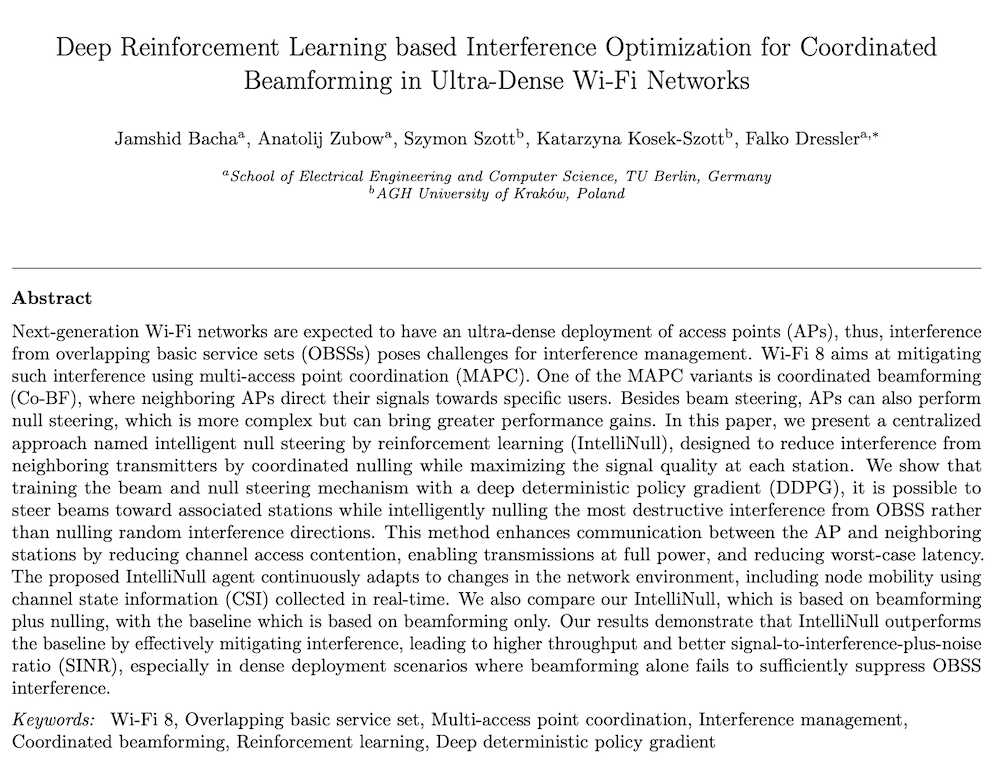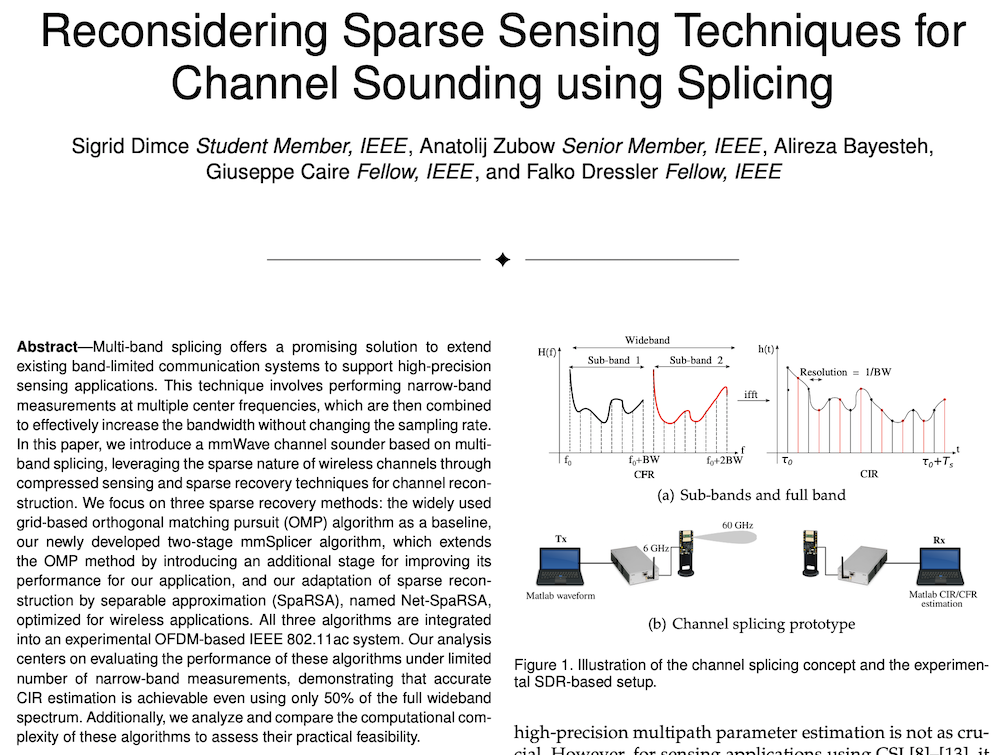Literature Database Entry
gawlowicz2020wov
Piotr Gawłowicz, Elnaz Alizadeh Jarchlo and Anatolij Zubow, "WoV: WiFi-based VLC testbed," arXiv, cs.NI, 2001.08489, January 2020.
Abstract
We present a complete Visible Light Communications (VLC) transceiver system consisting of low-cost Commercial-Off-The-Shelf (COTS) components. In particular, we show that COTS IEEE 802.11n (WiFi) devices can be used so that the physical and data link layers of radio frequency (RF) WiFi, i.e. 2.4 GHz, are reused for VLC. Moreover, as WiFi is fully integrated with the Linux system, higher protocols from network to transport and application layer can be used and tested in VLC-related experiments. Our approach has the advantage that a VLC experimenter can fully focus on VLC-related low-level aspects like the design of novel VLC front-ends, e.g. LED drivers, lenses, and photodetectors and test their impact directly on the full network protocol stack in an end-to-end manner with real applications like adaptive video streaming. We present first results from experiments using our prototype showing the performance of unidirectional VLC transmission. Here we analyze the distortions introduced as well as the relationship between signal strength on frame error rate for different MCS and the maximum communication distance. Experimental results reveal that a data rate of up to 150 Mbps is possible over short ranges.
Quick access
Original Version ![]() (at publishers web site)
(at publishers web site)
Authors' Version ![]() (PDF on this web site)
(PDF on this web site)
BibTeX ![]()
Contact
Piotr Gawłowicz
Elnaz Alizadeh Jarchlo
Anatolij Zubow
BibTeX reference
@techreport{gawlowicz2020wov,
author = {Gawłowicz, Piotr and Alizadeh Jarchlo, Elnaz and Zubow, Anatolij},
doi = {10.48550/arXiv.2001.08489},
title = {{WoV: WiFi-based VLC testbed}},
institution = {arXiv},
month = {1},
number = {2001.08489},
type = {cs.NI},
year = {2020},
}
Copyright notice
Links to final or draft versions of papers are presented here to ensure timely dissemination of scholarly and technical work. Copyright and all rights therein are retained by authors or by other copyright holders. All persons copying this information are expected to adhere to the terms and constraints invoked by each author's copyright. In most cases, these works may not be reposted or distributed for commercial purposes without the explicit permission of the copyright holder.
The following applies to all papers listed above that have IEEE copyrights: Personal use of this material is permitted. However, permission to reprint/republish this material for advertising or promotional purposes or for creating new collective works for resale or redistribution to servers or lists, or to reuse any copyrighted component of this work in other works must be obtained from the IEEE.
The following applies to all papers listed above that are in submission to IEEE conference/workshop proceedings or journals: This work has been submitted to the IEEE for possible publication. Copyright may be transferred without notice, after which this version may no longer be accessible.
The following applies to all papers listed above that have ACM copyrights: ACM COPYRIGHT NOTICE. Permission to make digital or hard copies of part or all of this work for personal or classroom use is granted without fee provided that copies are not made or distributed for profit or commercial advantage and that copies bear this notice and the full citation on the first page. Copyrights for components of this work owned by others than ACM must be honored. Abstracting with credit is permitted. To copy otherwise, to republish, to post on servers, or to redistribute to lists, requires prior specific permission and/or a fee. Request permissions from Publications Dept., ACM, Inc., fax +1 (212) 869-0481, or permissions@acm.org.
The following applies to all SpringerLink papers listed above that have Springer Science+Business Media copyrights: The original publication is available at www.springerlink.com.
This page was automatically generated using BibDB and bib2web.





